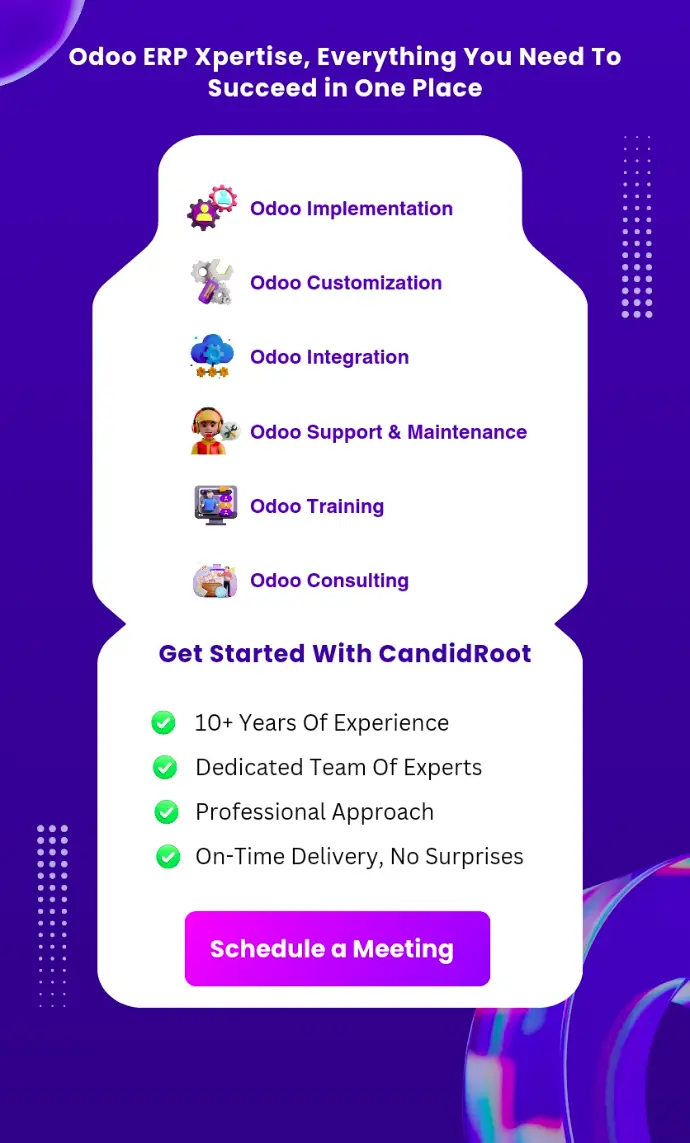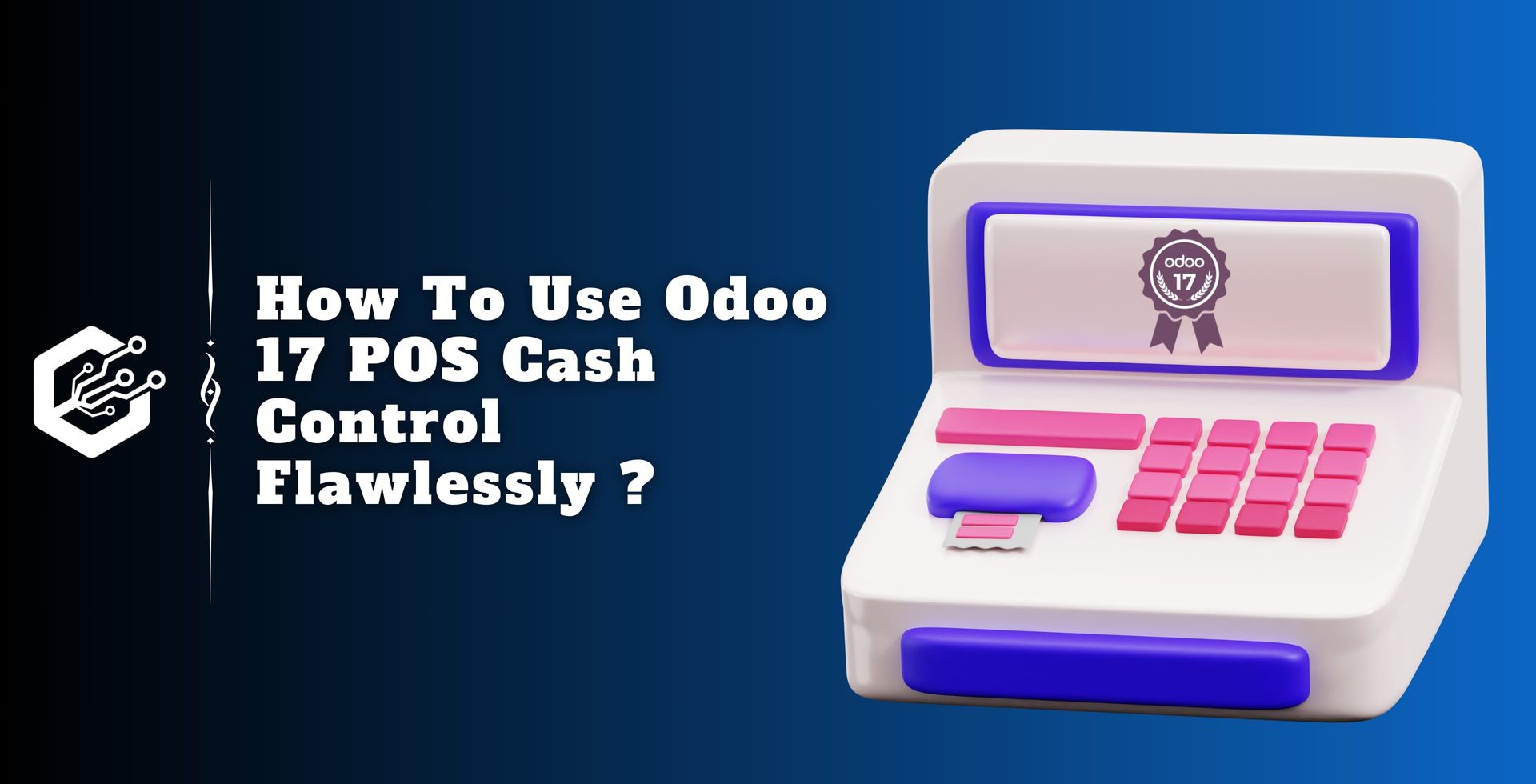Equipment maintenance is important for maintaining efficient production processes and reducing downtime in any industrial business. The introduction of digital technology, such as Odoo 17, has improved the efficiency of speed of managing equipment maintenance throughout production.
Several tasks are included in equipment maintenance in the manufacturing process to demonstrate the dependability and features of the tools and machines used.
Preventive and corrective maintenance are two of these tasks. This blog post explores how Odoo 17 makes it easier for the production workflow to maintain equipment effectively.
Improving the durability of equipment is largely dependent on careful maintenance schedules. The maintenance module service in Odoo 17 offers a comprehensive solution that always worries about maintenance duties.
Users may easily manage the complexities of maintenance workflows by using Odoo ERP. This included managing management requests, scheduling appointments using calendars, and creating maintenance stages and teams.
By ensuring optimal performance and longevity for industrial equipment, this holistic approach not only streamlines maintenance operations but also maximizes efficiency and minimizes downtime.
Maintenance Teams and Work Centers
The maintenance crew is important to a company’s ability to run its mechanical machinery and equipment efficiently.
Performance monitoring, regular maintenance, and comprehensive inspection to identify potential problems early on are some of its core responsibilities.
Users can assign equipment maintenance tasks to specified teams in an effective manner using the Odoo 17 Maintenance module.

Users select the Maintenance Teams menu under the configuration tab to begin this process. From there, by selecting the new icon, as seen in the image that goes with it, users may quickly form new maintenance teams.

Users are presented with a new area at the bottom of the Teams window when they click the New button with the Maintenance Teams option, which makes it easier to create new maintenance teams.
In this field, users are required to provide important information such as Team Name, affiliated company, and assigned Team Members, exactly as it is modeled in the provided.
To find different work centers for the machines in your business, open the Odoo 17 Maintenance module and select the Equipments tab. From there, select the work centers option.

To provide a new work center customized to your company’s unique needs, just click the new icon, which is indicated in the screenshot that is being pushed.
This starts the creation process and lets the user provide information about the work center, including its name, tag, other work centers, hours of operation, cost per hour, OEE target, capacity, and any other relevant information.

Once your company’s machines have been organized into work centers, go to the Equipment tab and enter the corresponding machinery for each work center.
To add relevant details to the equipment tab and make it more widely known, select the ‘Add a line’ option.

As seen in the above example, users may easily consider important facts like the equipment category, and technician details inside the equipment tab.
Users may efficiently manage and track the start of every machine, expedite maintenance procedures, and guarantee peak performance throughout the manufacturing process by methodically arranging this data.
Equipment Categories
The equipment category in the Odoo 17 Maintenance module provides an organized method of classifying machinery according to particular standards.
Users may simply categorize equipment thanks to the simplified and simple management of equipment types.
Users select the equipment categories menu from the configuration tab to start classifying the equipment.
As seen in the screenshot provided, customers can access an extensive variety of equipment categories here.

Users can quickly build and manage equipment categories based on their own business requirements and operational specifications by using this interface.
Users can use the New icon with the Equipment Categories menu in the Odoo 17 Maintenance module to add a new equipment category for a particular machine. Users can formally define a category that suits their business requirements by following these procedures.
Select the Equipment categories menu by clicking on the New symbol.
To set this category for monitors, enter ‘Monitors’ as the Category Name in the promoted space.
Choose the right business from the list of possibilities.
Select the Responsible individual who will supervise the upkeep and administration of the monitors in this category, guaranteeing responsibility and effective work completion.

Users create a new equipment category in their business that is only for monitors by entering these parameters.
Record Equipment in Odoo 17 Maintenance.
Users can easily navigate to the Odoo 17 Maintenance module’s equipment window to include necessary equipment for maintenance within your company.
To begin entering new equipment details, navigate to the Equipments tab in this interface and select the Machines & Tools menu.
Users can create comprehensive equipment that is customized to meet the demands of their company by clicking on the New icon located under the Machines & Tools menu.

Users can add a multitude of details to the equipment profile through the creation interface.
In addition to basic data like the name and description of the equipment, users can also specify the equipment category, company, used by, employee, work center, and product information.

Through the "Used By" field in the Equipment window, users can designate which individuals are allowed to use the equipment for business reasons.
This field provides options for categorization, including Department, Employee, and Other, which offers accurate equipment identification.
When "Employee" was chosen from the "Used By" column, an Employee column appeared, allowing users to identify the individual employee who is grouped with the equipment.
With the help of an employee profile-popularized dropdown menu, users may quickly choose the resurrected employee. To guarantee account record-keeping and organizational alignment, users are also advised to designate the firm that is associated with the equipment.
Select the relevant maintenance team from the list of choices by clicking on the dropdown menu next to the Maintenance Team box.
This group could consist of engineers, technicians, or maintenance staff with specialized training in performing maintenance on sealed machinery.

Users can provide information about the machines underneath the Product Information tab. As seen in the example screenshot above, they can input data such as the vendor, model number, serial number, vendor reference, effective date, cost, and warranty expiration date.

Several important measures for evaluating the performance and dependability of equipment are available under the Maintenance tab.
The average time between equipment failures is represented by the term "Expected Mean Time Between Failures," which offers information about the equipment.
Mean Time Between Failure provides a useful gauge of equipment by calculating the average amount of time that has passed between failures using historical data.
The Estimated Next Failure model makes predictions about the likelihood of the next equation failure based on historical data and maintenance trends.
Users can monitor and evaluate the equipment's performance over time by tracking the latest failure, which tracks the most recent equipment failure.
Mean Time To Repair calculates the typical amount of time needed to fix a piece of equipment once it breaks, which helps with the evaluation of upkeep effectiveness and downtime control.
In the Odoo 17 Maintenance module, we enter equipment details in this manner.
Maintenance Request for an Equipment
Go to the Maintenance Requirements menu after setting up your equipment records. For particular pieces of equipment, you can manually create maintenance requests here.

By clicking on the "New" option, you may manually make a maintenance request by providing the necessary information about the equipment, maintenance type, priority, work description, scheduled date, duration, company, and any other pertinent details.

Preventive and Corrective maintenance types are distinguished in Odoo. Corrective maintenance deals with problems that have already arisen, concentrating on fixing or returning equipment to normal functioning following a failure.
Preventive maintenance entails planned actions intended to prolong asset lifespan and purchase of equipment.
Based on the status of the equipment, you can dynamically modify the Odoo maintenance request stage. You can use Odoo 17 to submit requests for general equipment maintenance in this manner.
The efficient running of production users depends on effective equipment maintenance. Businesses may increase overall operating efficiency, reduce downtime, and streamline maintenance procedures using Odoo Services.
Businesses may successfully manage equipment maintenance during production and ultimately boost productivity and profitability by using the platform’s features and best practices.


